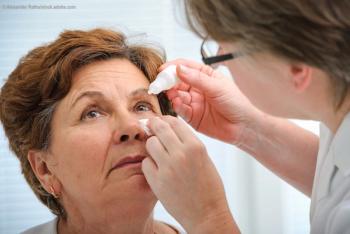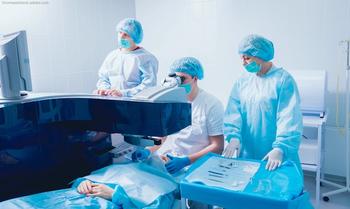
Delivering the Steinert Lecture during the ASCRS Refractive Day, Richard L. Lindstrom, MD, provided his thoughts on the current and forthcoming state of laser refractive surgery.

Delivering the Steinert Lecture during the ASCRS Refractive Day, Richard L. Lindstrom, MD, provided his thoughts on the current and forthcoming state of laser refractive surgery.

Results of the EAGLE study support clear-lens extraction as initial intervention for eyes with primary angle-closure glaucoma (PACG) or primary-angle closure (PAC) and high IOP, said David S. Friedman, MD, PhD, at the 2018 ASCRS Glaucoma Day.

Small pupils usually travel in clusters with other surgical challenges. Kendall E. Donaldson, MD, MS, explains how surgeons may better manage small pupils during phacoemulsification by employing all tools and techniques available to them.

Clinical researchers, experts share the latest news in vision research, focusing on the power of genetic therapy

Learn how coordination, cooperation, and communication make up the components of successful delegation.

In an increasingly technologic world, blue light-omitted by devices like cell phones and computers-is inescapable. It’s important to know how it contributes to AMD, and how your patients can take steps to protect their eyesight with three easy tips from Alan Mendelsohn, MD.

Surgeons work hard to get happy patients, and satisfied patients spread the word and refer their friends. They don't need extra post-op visits, and can return yearly to see their referring doctor. Selecting the best presbyopia-correcting IOL for a patient is critical and depends on methodical, preoperative decision-making.

Is this new policy in the patient's best interest?

Findings of a study determining the prediction error in the magnitude of residual astigmatism after cataract surgery with a toric intraocular lens (IOL) suggest that use of intraoperative wavefront aberrometry for toric power selection could enhance the refractive outcome in a large subset of eyes.

The famous line from George Bernard Shaw's "Man and Superman"-"those who can, do; those who can't, teach"-is sometimes quoted to explain why certain of us choose a career in academics. Fortunately for many medical students, the head of medical student education in my medical school was both a doer and a teacher.

Results of a retrospective study show that simple congenital ptosis, even when the pupil is obstructed, is less amblyogenic than conventionally thought. The study supports correcting refractive error and strabismus before considering ptosis surgery.

Results of a randomized controlled trial suggest that treatment with topical trehalose 3% ophthalmic solution might increase the rate of re-epithelialization after PRK.

Topography-guided LASIK and small-incision lenticule extraction (SMILE) were compared for the treatment of myopia and myopic astigmatism in a randomized, contralateral eye study. Results were good with both procedures, but at 3 and 12 months, there were statistically significant differences for most outcomes favoring LASIK.

A sustained-release dexamethasone implant is safe and well tolerated when used to control pain and inflammation after cataract surgery, according to investigators.

Corneal lifting is a new technique to treat keratoconus. The technique offers the possibility of performing refractive complementary procedures based on a normal cornea.

Let's examine the most successful things your front office can do to improve dispensary sales.


LASIK is a highly customized treatment option, which makes it a sought-after procedure to the millennial generation.The popular online review platform Yelp! is a helpful tool in generating positive feedback, which then attracts younger people to visit your practice.


Interested in becoming a principal researcher? Read this first.


The development of many innovations in ophthalmology did not happen in a straightforward manner as shown in these case examples.

Two headlines broke new ground recently when it comes to horror and adversity. Coincidentally, they both involved worms and left eyes: "Woman pulls wiggling cattle worms from her eyeball, makes medical history" appeared along with "Brain-eating pork worm removed from man's eye."

What do you mean "This Is Us" isn't a cure for dry eye?!

Findings from anecdotal case reports are supported by clinical studies to highlight the relevance of advances in corneal imaging to help evaluating the cornea.

Despite a heightened atmosphere on the Relative Value Scale Update Committee due to Congressional mandates to reallocate funds from specialty codes, ophthalmologists have been spared from the significant financial impact affecting certain other specialties. However, a number of important ophthalmic codes have been placed under review, leading to decreases in payment for some procedures.

Findings from anecdotal case reports are supported by clinical studies to highlight the relevance of advances in corneal imaging to help evaluating the cornea.

A novel glistening-free IOL has been tested in 94 eyes and found to give good visual outcomes with a low incidence of PCO

Compared with SLT, PSLT appears to offer some advantages, such as a shorter duration of treatment and more comfort for patients.

Five ophthalmologists share how to make the most of a co-managed relationship for smoother patient handoff, improved preoperative experiences, and better postoperative outcomes.